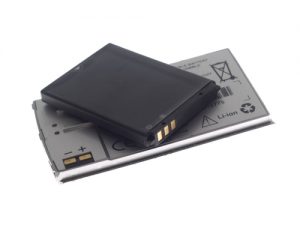
The economy will become more and more electrified by battery technology, predicts John Kincaide, who is vice chair of the battery recycling committee of the National Alliance for Advanced Transportation Batteries (NAATBatt). The increased reliance is bringing into the stream additional large and powerful lithium-ion packs commonly used in solar energy storage systems, electric cars and other applications.
Kincaide also runs WeRecycleBatteries.com, which buys end-of-life batteries and funnels them to the appropriate disposal outlet. He has seen some of these batteries enter scrap yards in loads of other materials, and in some cases, the collectors don’t know what they are.
“They are coming in from indirect sources, so this is a concern,” Kincaide said. “Because these products are very powerful, they can have a state of health that is unknown. Unlike a lead-acid battery or a laptop battery that has a limited amount of energy, these could, in theory if there was enough of them, actually light up your whole house.”
One challenge for the recycling industry is identifying and separating the batteries, while another is making battery recycling pencil out financially.
Know the products
When lithium-ion batteries get mixed in with other components, the outsized power of the batteries presents the possibility for trouble for e-scrap companies.
In 2016, a load of smaller lithium-ion batteries from electronics caused an explosion and fire during transportation for recycling, leading to a lawsuit. A safety campaign launched by battery stewardship group Call2Recycle this year specifically named rechargeable lithium-ion batteries as the “highest risk” batteries for recycling companies and urged companies handling the materials to take certain precautions.
The products using large-format lithium-ion batteries have an average life span of about seven to 10 years, Kincaide said. As the price point for products using this technology continues to drop, and as those products begin to hit the end-of-life cycle, he predicts an influx of these materials into the end-of-life stream.
They will pop up from time to time in most e-scrap facilities across the U.S. and Canada in the next couple years, Kincaide said, and the stream will likely grow from there.
“Given just my experience, what’s happened in the distribution channel is it’s coming from strange, different angles, non-traditional routes of acquisition of this material,” Kincaide said. “Most people just don’t know what to do with this stuff.”
Economics up in the air
The materials will present new financial issues as well, Kincaide said, due to the composition of the batteries. He described five different types of chemical makeup in lithium-ion technology. They’re employed according to the particular traits required for the product, such as the desired rate of energy discharge. Two of the five, lithium iron phosphate and lithium-titanate, do not contain cobalt.
“Right now, in terms of how the chemistry of recovery works in any processor, they would be immediately a negative-value product,” Kincaide said.
The cobalt is what makes the batteries profitable to recover. Pure cobalt currently trades for about $55,000 per metric ton, skyrocketing up from about $26,000 per metric ton last year, Kincaide said. Even among the batteries with cobalt, the element often exists only in a trace amount. But batteries without cobalt are left with mostly iron, deflating their economic value.
The e-scrap industry is familiar with situations that can arise from a growing stream of limited- or negative-value materials. Look no further than the CRT stockpiles around the country. Kincaide said he and other battery recycling stakeholders in groups such as NAATBatt are concerned end-of-life lithium-ion batteries could spiral into a similar problem.